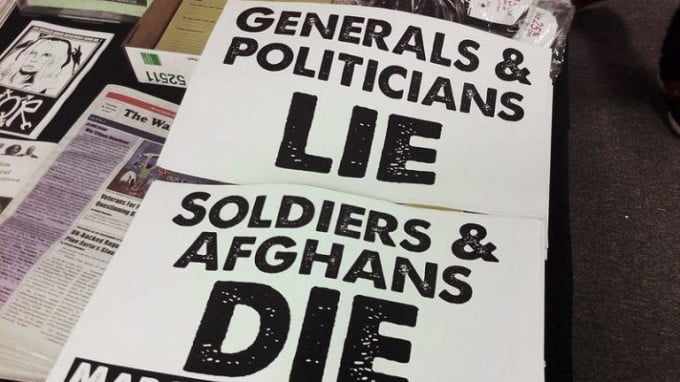Ongoing Armed Conflict in Yemen is Humanity’s Shame
It seems that nobody is willing to pay attention to the fact that the ongoing armed conflict in the poorest Arab country of the world – Yemen, has recently passed the five year mark. Throughout this time the country would be protected by a resistance movement of the Houthi insurgency from the Ansar Allah movement together with those armed units that remained loyal to the former Yemeni president, Ali Abdullah Saleh, with the latter being supported by Iran. They are opposing a Saudi invasion force that is supporting the self-exiled puppet president Mansur Hadi and those local groups that pledged allegiance to him.
In spite of the widespread condemnation of this conflict, the ruling elites of the US, UK and Germany keep pumping all sorts of weapons into the conflict zone, thus fanning the flames of the armed struggle.
Formally, both Saudi Arabia and the UAE are recognized as strategic partners of the above mentioned three Western states, which results in the British, German and American armed forces taking part in the hostilities. Even though Berlin denounces this fact, it’s been unable to hide that both Riyadh and Abu Dhabi have been using German military equipment in the course of the operations they would launch across Yemen. This was revealed by a joint investigation conducted by DW (former Deutsche Welle), Stern, report München, a collective of freelance journalists from Lighthouse Reports and an investigative website Bellingcat. It’s been announced that those taking part in the investigation would analyze all satellite images that they could get their hands on together with the footage taken by Arab journalists in this war zone in a bid to establish the truth.
In violation of those restrictions that were agreed upon by the Union parties and USPD, Berlin has recently approved a sale of one billion euros worth of weapons to the Saudi-led alliance that spearheads Riyadh’s military effort in Yemen. Additionally, the German government approved two more military deals with Saudi Arabia, which was revealed by the State Secretary of the Federal Ministry for Economic Affairs and Energy, Ulrich Nussbaum, in spite of the fact that a total ban on weapons sales to this Middle Eastern country was introduced as early as last November.
Under these circumstances, it doesn’t take a genius to understand that the armed struggle in Yemen won’t come to an end in the foreseeable future. But who is going to bear responsibility for this?
Of course, it’s important to recognize that there’s two separate conflicts unraveling in Yemen at the same time. The first is the internal struggle between the Houthis and the government recognized by Saudi Arabia, while the other one is nothing short of a proxy war between Riyadh and Tehran.
However, this long and protracted conflict has already spawned a large number of various factions that would often fight against their former allies. On top of the “usual suspects” that can be found operating in most any country of the region, those are Al-Qaeda and ISIS, there’s now Southern separatist forces that were promised by the UAE that they would regain independence from North Yemen. This resulted in Abu Dhabi putting a total of sixty thousand militants on the payroll after arming them with US-made weapons. Those forces are deployed across those regions from where their fighters originate from, which has resulted in the formation of the so-called Shabwah elite unit, Hadhramaut elite unit and Aden defense force. With each region mobilizing its own fighters it’s safe to say that there’s going to be a lot of separatist sentiments across Yemen even when the Saudi aggression against this country is over.
There’s no arguing that back when Saudi Arabia was planning and anticipating this conflict, it had no intentions of getting stuck in Yemen for a total of five years fighting a resistance movement that managed to topple the government of Mansur Hadi. Even today, the Houthis remain in control of the absolute majority of large cities, as no amount of British, German and American-made weapons could allow Riyadh to establish control of the capital city of Yemen – the town of Sana’a.
The armed struggle in Yemen wasn’t provoked by religious differences or ethnic feud, the sole reason why Yemeni civilians keep dying today is Saudi Arabia’s diminishing oil reserves, as Yemen has a fair share of discovered but still undeveloped oil deposits. The icing on the cake for Riyadh is the ability to exercise control over the Bab al-Mandab Strait – the most important choke point along the oil transportation routes. With some 3.4 million barrels of oil a day passing through the “Gate of Tears”, it’s safe to say that anyone who controls Yemen will gain considerable leverage over its neighbors.
Yet, the only thing that Saudi Arabia managed to achieve so far through waging a war of attrition on Yemen is plunging it into the most dire humanitarian crisis of today. According to Yemen’s Minister of Planning and International Cooperation, Najib al-Auj Yemen’s economy has already taken a 50 billion hit in both direct and indirect damage over the course of the hostilities. Back in 2014, analysts would draw the attention of the international community that Yemen’s economy slowed by 50%, with inflation going through the roof and food prices increasing by 112%. And things have got much worse these days…
However, the true scale and horror of this conflict becomes evident when we are to take a look at the official casualties figure, telling us that more than ten thousand people perished since the beginning of the hostilities, while three more million were displaced. Yet, the international community prefers to do nothing about the fact that the absolute majority of the victims of Saudi-led air strikes in Yemen is civilians.
According to last year’s report released by UNICEF, every ten minutes a child dies in Yemen from bombs, infection or malnutrition. Further still, one woman and six newborns die every two hour from complications during pregnancy or childbirth. No more than 51% off all the hospitals across Yemen is capable of providing every medical service a person may need, however, most of those are in dire need of medical personnel, equipment and drugs.
However, even if the actual resolution of the conflict is a long and windy path to take, we must realize that Yemen needs immediate assistance from the world. First of all, it needs humanitarian aid as millions of local citizens are running the risk of dying from starvation. Then, due to the difficult situation this country has found itself in, it need military assistance as Yemen has no real ways of combating the growing terrorist threat that may evolve into a major obstacle to international shipping in the Red Sea.
There’s no way for us to keep ignoring this conflict any further, as it’s an unknown variable that can lead to grave consequences for any of the international players that prefer to look the other way. But first and foremost, we must put an end to the horrible suffering of Yemeni people.
By Grete Mautner
Source: New Eastern Outlook







